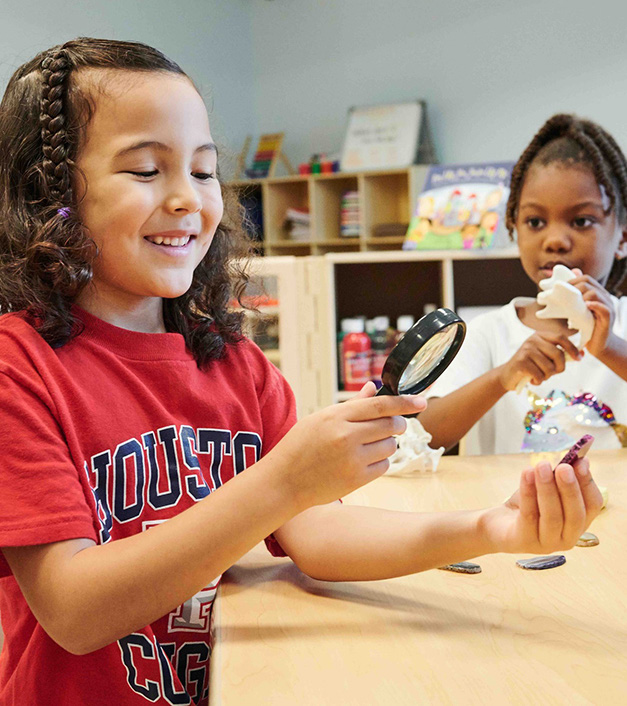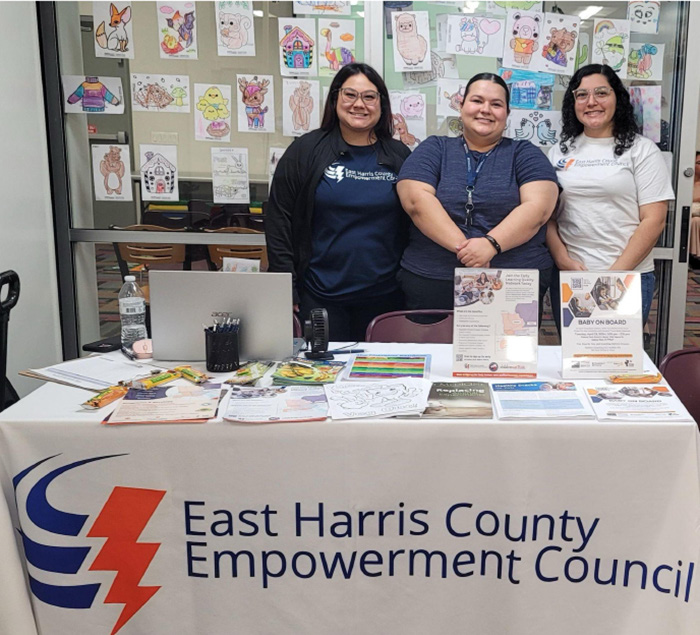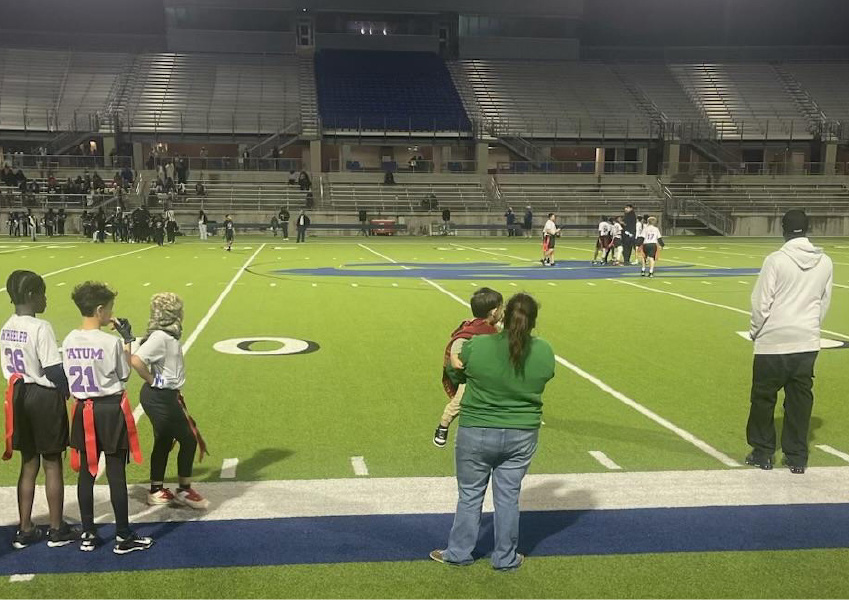Elevating Early Learning and Child Care Quality with East Harris County Empowerment Council
North Shore, Jacinto City, & Galena Park
HARRIS COUNTY EARLY LEARNING QUALITY NETWORK (ELQN)
COMMUNITY PROFILE
Stay connected! Sign up for ELQN updates.
ABOUT HARRIS COUNTY ELQN
Harris County’s Early Learning Quality Network (ELQN) is a community-centered initiative dedicated to strengthening early learning and child care across the county. Supported by the Harris County Department of Economic Equity and Opportunity, this three-year effort relies on community input and local data to guide its work. This profile highlights the initiative’s progress in North Shore, Jacinto City, and Galena Park (located in Harris County Precinct 2) through December 2024.
Across Harris County’s four precincts, five communities identified as Child Care Deserts with high social vulnerability are participating in ELQN. Local Network Organizations (LNOs), chosen for their strong ties to these areas, lead efforts to engage child care providers, families, and community members in identifying challenges, priorities, and improvement strategies related to early learning and child care. CHILDREN AT RISK, serving as the Network Support Hub (NSH), provides LNOs with technical assistance and oversees funding for community-identified quality-enhancing initiatives.
By fostering community collaboration and leveraging local strengths, ELQN demonstrates Harris County’s shared commitment to building a brighter future for our youngest learners.

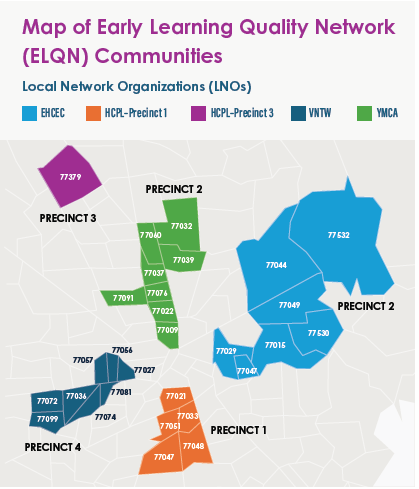
East Harris County Empowerment Council: Precinct 2
Harris County Public Library: Precincts 1 & 3
VN TeamWork, Inc.: Precinct 4
YMCA of Greater Houston: Precinct 2
LNO Spotlight | East Harris County Empowerment Council (EHCEC)
EHCEC was selected to coordinate the ELQN initiative in North Shore, Jacinto City, and Galena Park. The EHCEC is committed to improving quality of life through innovative, sustainable programs and services that empower men, women, and youth to achieve their full potential.
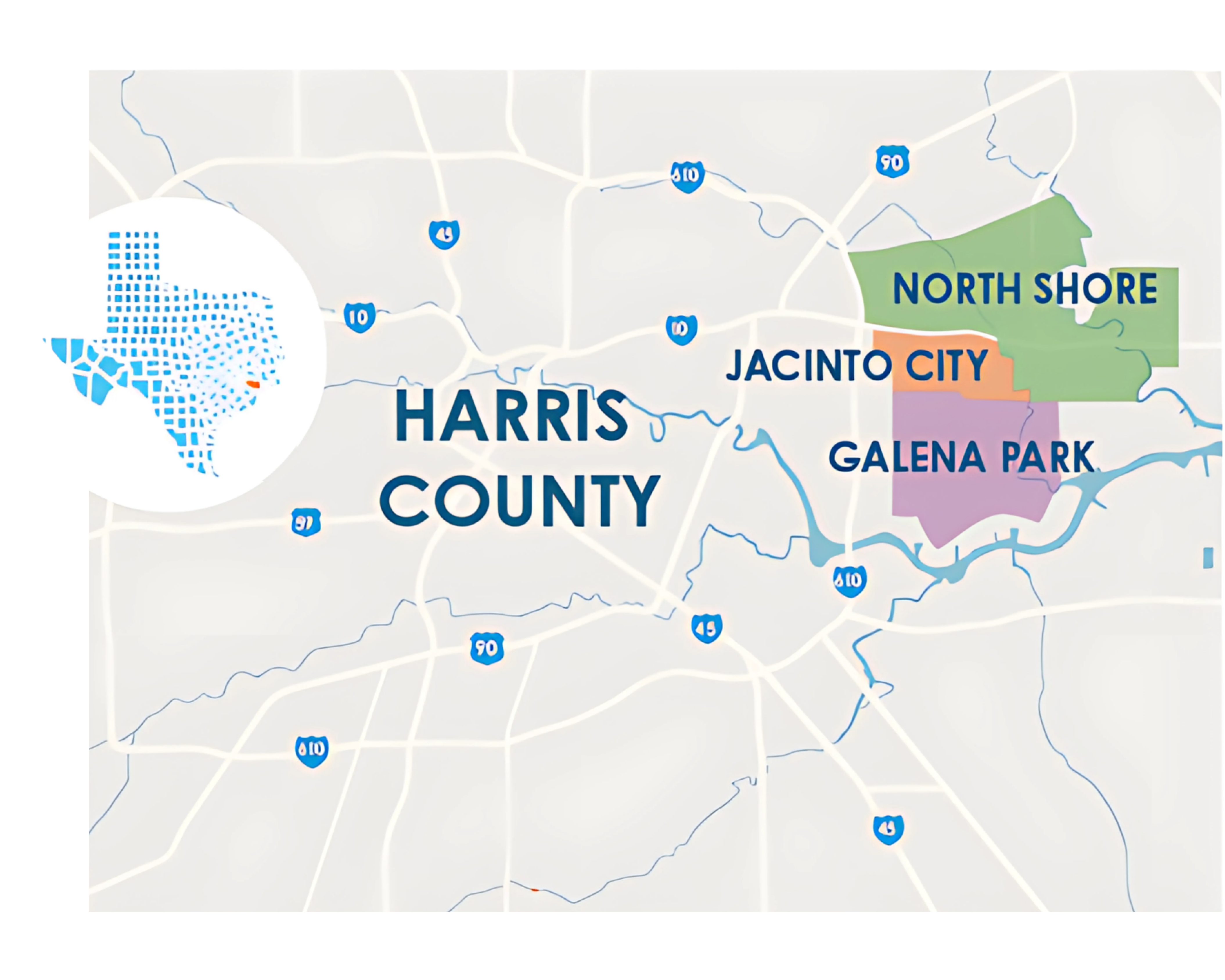
AT A GLANCE
NORTH SHORE, JACINTO CITY, AND GALENA PARK
North Shore, Jacinto City, and Galena Park are unique and historically rich areas in East Harris County, with strong ties to Houston’s industrial roots. Each area thrives on community connection and resilience, making them all distinct parts of Harris County.
Number of Providers
Estimated Number of Seats
Estimated Children in Need
NORTH SHORE
North Shore, located along the Houston Ship Channel, is known for its bustling maritime industry and vibrant, tight-knit community. It’s home to a diverse population and has a strong high school football culture, with the North Shore Mustangs serving as a source of community pride.
Total Population
%
Population Under Age Five
Median Household Income
Race & Ethnicity
- White 6.9%
- Black 2.5%
- Hispanic or Latino 86.3%
- AAPI .05%
- 2 or More Races 49.1%
- American Indian & Alaskan Native 1.9%
JACINTO CITY
Jacinto City, established during World War II to house workers from nearby shipyards and industrial plants, maintains a small-town atmosphere despite its proximity to Houston. It has a blue-collar spirit, with many families rooted in the area for generations. Its unique identity is reflected in community events such as local parades and festivals.
Total Population
%
Population Under Age Five
Median Household Income
Race & Ethnicity
- White 40.8%
- Black 5%
- Hispanic or Latino 87%
- AAPI .1%
- 2 or More Races 37.5%
- American Indian & Alaskan Native 1%
GALENA PARK
Galena Park, another ship channel city, has a long history tied to the petrochemical industry. It’s characterized by its working-class, predominantly Hispanic/Latino/e population and is known for its strong community focus. The city boasts numerous parks and public spaces. It has a deep sense of tradition, with residents taking pride in its historical significance as an industrial backbone of the Houston area.
Total Population
%
Population Under Age Five
Median Household Income
Race & Ethnicity
- White 41%
- Black 4.6%
- Hispanic or Latino 90.8%
- AAPI 2.2%
- 2 or More Races 49.1%
- American Indian & Alaskan Native .2%
FOSTERING COMMUNITY ENGAGEMENT THROUGH ELQN
To prioritize community voices, LNOs provided residents with many meaningful opportunities to share ideas on how to improve and expand early learning and child care opportunities within their neighborhoods. In spring and summer 2024, EHCEC organized outreach events, listening sessions, and town halls to gather input from child care providers, families, and other community members. During this period, residents were also encouraged to apply to the ELQN Advisory Committee, which was responsible for identifying key needs and envisioning what high-quality care could look like in their communities.
EHCEC’s ELQN Advisory Committee, consisting of two early childhood directors, one educator, one after-school program director, and one parent, played an essential role in considering community input, analyzing relevant data (including community surveys), and generating a plan to address local needs while staying aligned with community priorities.
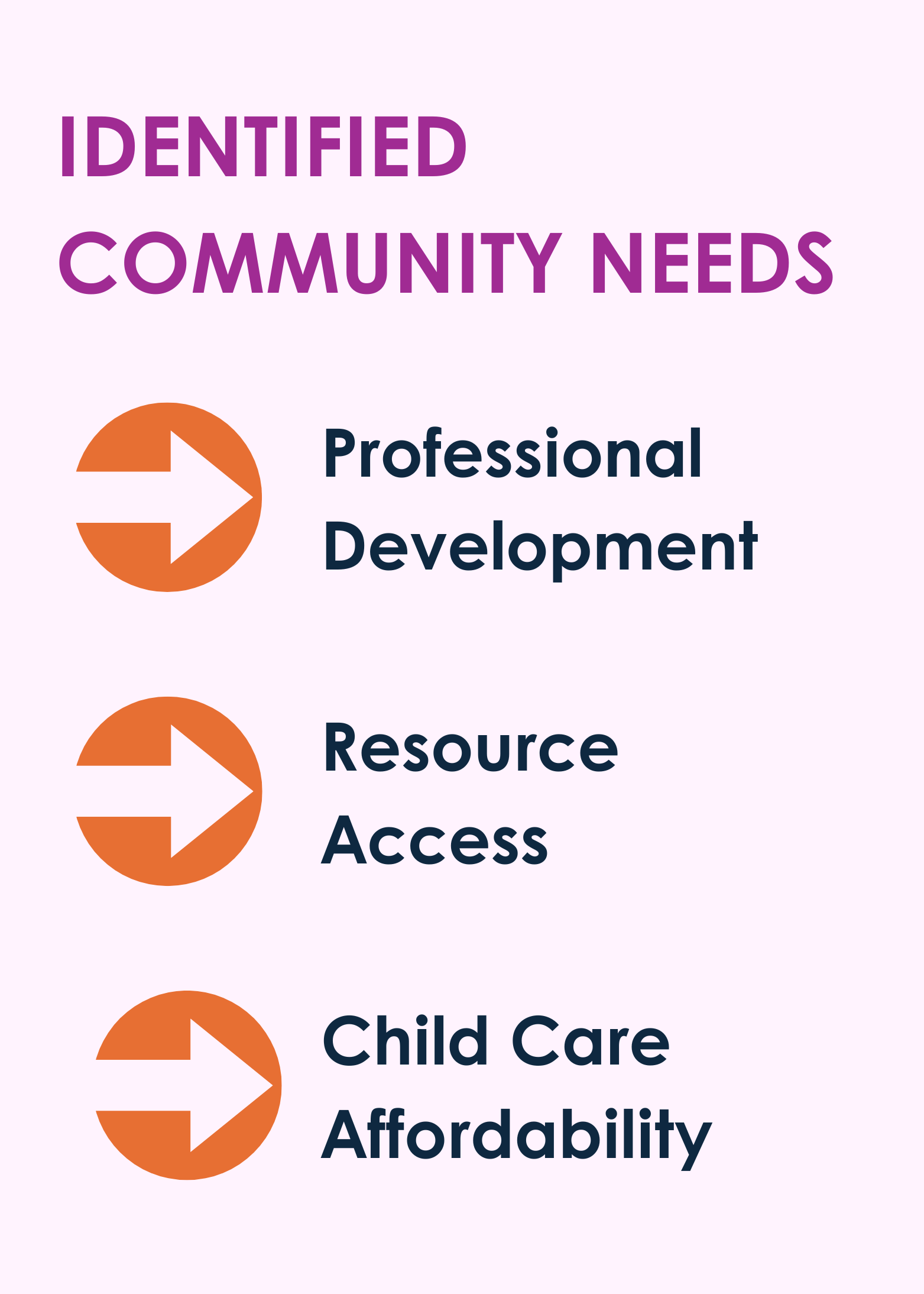
ELQN COMMUNITY CENTERED PLANNING PROCESS
Through this process, EHCEC’s ELQN Advisory Committee identified key early learning and child care challenges in their target area. Providers reported gaps in professional development and access to resources, while families struggled with poverty, irregular work hours, and limited affordable care options—especially in high-need areas like Galena Park, where nearly 48% of children live in poverty. Despite existing resources, low participation in quality improvement programs like Texas Rising Star highlights a disconnect between available support and effective use. Addressing these challenges requires relevant provider training, financial assistance for families, flexible care solutions, and targeted outreach to bridge gaps and enhance accessibility. Despite these challenges, the strong ties among residents and community resilience in these areas provide a foundation to enhance early learning and child care opportunities, and support systems for families and providers.

BUILDING COMMUNITY THROUGH COLLABORATION AND SHARED LEARNING
EHCEC’s implementation of ELQN in their neighborhood highlighted a sense of growth and learning as they navigated the pilot program. One EHCEC team
member reflected, “We had a few ‘put everything on the table’ meetings, which were good and needed.” These meetings underscored the reality of working within a pilot program, where predefined answers were often unavailable. Flexibility and grace became essential as the team learned and adapted together.
As the program evolved, the importance of informal spaces for support became clear. An EHCEC staff member shared, “When you talk with ELQN, you’re validated . . . you’re not alone.” This open exchange and mutual support fostered camaraderie and reassurance, creating a collaborative environment where challenges were met with understanding and shared solutions. This approach not only bolstered team morale but also supported the program’s ongoing growth and improvement.
THROUGH THEIR EYES: AMPLIFYING COMMUNITY VOICES WITH PHOTOVOICE
A community advocate and a child care provider who is also a parent joined the
Photovoice project to explore the experiences of families, providers, and community members with early learning and child care in North Shore, Jacinto City, and Galena Park. They captured photos and shared stories—both their own and their neighbors’—highlighting community needs, key issues, and opportunities for improvement. Below, they share their photos and narratives
about the community.
BRIDGING THE GAP IN AUTISM SERVICES
This image depicts an early childhood classroom designed for students with autism, featuring a swing to help calm them when they need redirection. Sensory tools like these are vital for emotional regulation, sensory processing, and focus. They are commonly used in applied behavior analysis (ABA) therapy. ABA therapy helps individuals develop key life skills, such as communication, social interaction, self-care, and academics. Autism spectrum disorder is the fastest growing developmental disability, affecting one in 36 children in the US. As these numbers continue to rise, there is a significant unmet need for services, especially in east Harris County, where no centers are available to support autistic students.
While many children with autism receive support at school, there’s a shortage of community resources tailored to their needs. More centers are needed to provide a safe space where children can learn and grow outside the classroom, while also offering much-needed support for parents.
– Community Advocate
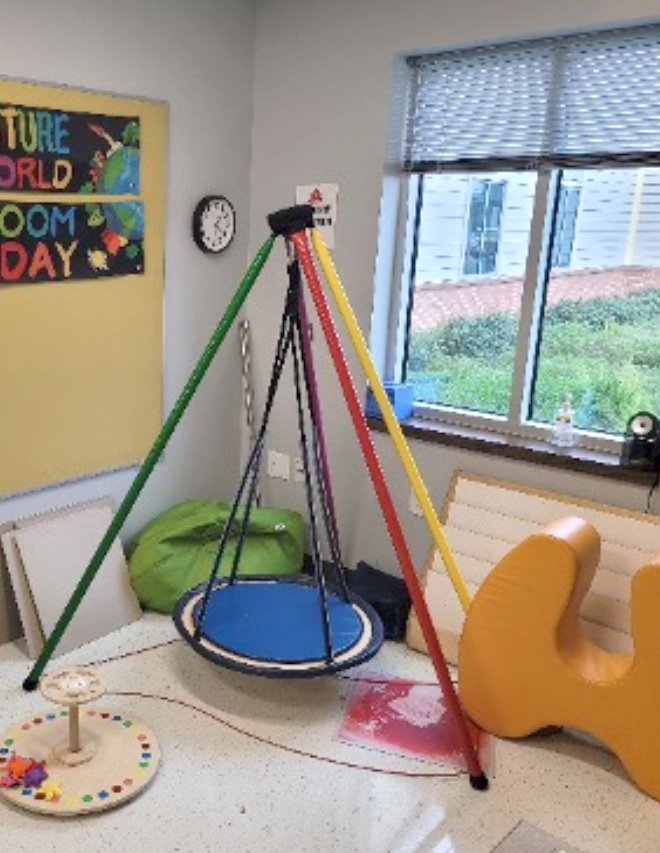
BALANCING WORK AND FAMILY
This photo captures a joyous moment as an elementary school makes it to the flag football Super Bowl for the first time, creating lasting memories for many families. The story I want to highlight, though, is about an educator balancing her
demanding role as a first-time mother. The mother and child seen on the sidelines are no strangers to school events. As an afterschool program site coordinator, the mother works in the evenings to provide a safe space, academic support, and enrichment for families who need it most.
Despite her dedication, she faces the challenge of finding child care that gives her peace of mind. Her son attends the district’s Early Learning Facility, which offers affordable care for employees, but its hours—closing at 5:30 p.m.—are not ideal for her evening job. The nearest alternative is 20 minutes away. To make it work, she brings her child to work, a challenging solution when she is the one everyone turns to for answers. She has repeatedly shared her concerns with district leadership, advocating for more convenient child care options. By better supporting educators who are also parents, we can help them achieve a healthier work-life balance, fostering a more sustainable and supportive environment for both families and educators.
– Child Care Provider and Parent
ELQN STRATEGIES TO ENHANCE EARLY LEARNING AND CHILD CARE QUALITY
After identifying and prioritizing the early learning and child care needs of the community, the ELQN Advisory Committee submitted a Child Care Quality Action Plan (CCQAP) to Harris County and CHILDREN AT RISK. This plan included quality improvement strategies that aligned with community needs. After a
feasibility review by Harris County, strategies were finalized in late 2024. Identification of needed resources began in late 2024, with implementation scheduled to take place throughout 2025 and 2026.
Child Care Quality Action Plan (CCQAP)
The CCQAP was developed by LNO staff and the ELQN Advisory Committee to address the key needs identified in each community. Drawing on community input and local data, the plan outlines actionable strategies to be implemented in collaboration with the county to meet these needs effectively.
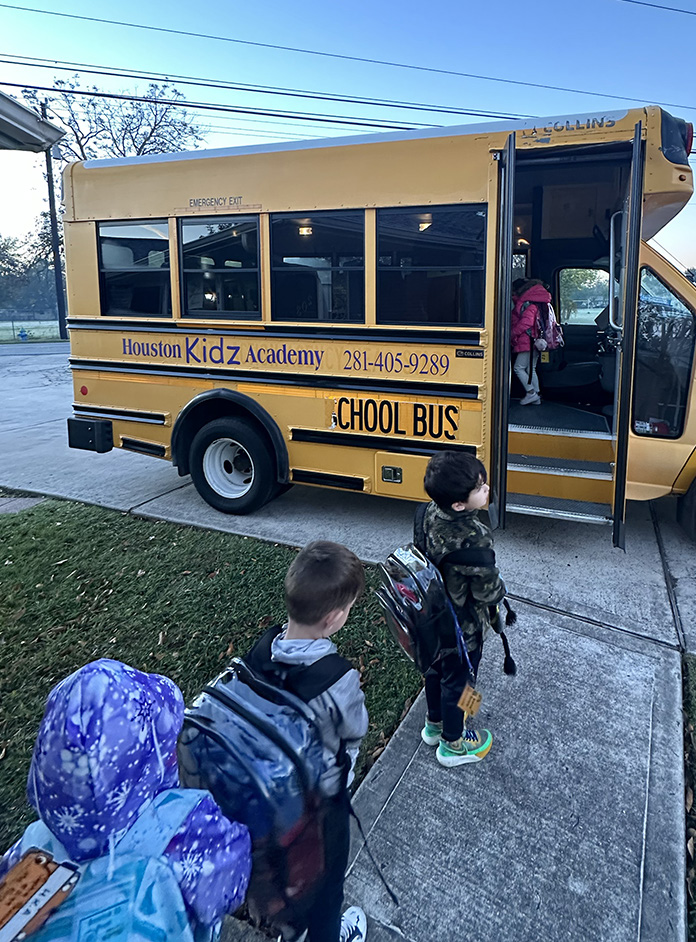
TURNING NEEDS INTO ACTION: ELQN STRATEGY GUIDE
COMMUNITY IDENTIFIED NEED
Professional Development
for parent and guardian education as well as training and mentorship programs for early learning and child care providers
Training and Professional Development
Training and professional development programs will help parents, caregivers, and child care workers in Harris County gain skills to support young children’s growth and learning. Training on topics like child development and creating inclusive, welcoming environments will be offered free of charge. Participants will also receive resources, coaching, and stipends.
COMMUNITY IDENTIFIED NEED
Safety and Equipment
to enhance safety measures; safety-proofing supplies to support both parents and providers in ensuring
children’s safety
Facility, Safety, and Security
This strategy will help child care centers and homes improve their facilities, safety, and security. Providers will apply to receive upgrades like new furniture and outdoor play equipment, or safety equipment such as cameras and childproofing items. Programs will be provided with customized items tailored to their needs and support for installation.
COMMUNITY IDENTIFIED NEED
Affordability
of child care for working families.
Emergency and Temporary Care
This strategy will help families with young children afford child care during tough times, such as after a job loss, during an emergency, or while waiting for assistance from other programs. Families will apply through local child care centers, which will partner with the program to provide temporary care. The program will pay centers directly, ensuring both families and providers receive the support they need in a timely manner.
ABOUT THE ELQN EVALUATION
The ELQN evaluation seeks to understand the planning and design, implementation, and community impact of the initiative over three years. Using diverse data sources—including community storytelling through photographs and narratives, interviews, focus groups, and surveys—the evaluation will provide actionable information on this community-centered initiative, documenting lessons learned along the way. The findings will enhance Harris County’s ability to serve young children and their families.
Engage with ELQN
Join us in our mission to make a lasting impact across Harris County.
Stay Connected
Follow @childrenatrisk on social media and subscribe to our newsletter to stay updated on our progress and learn more about how ELQN is making a difference in early learning across Harris County.
ACKNOWLEDGEMENTS
AUTHORS
Lisa Lopez-Escobar
Kate McKenney, EdD
Sherylls Valladares Khan, PhD
CONTRIBUTORS & REVIEWERS
Harris County Department of Economic Equity & Opportunity
CHILDREN AT RISK
East Harris County Empowerment Council (EHCEC)
EDITING
Cathy Cambron, Editcetera
DESIGN
Danielle Ness, Hey Darlin’
